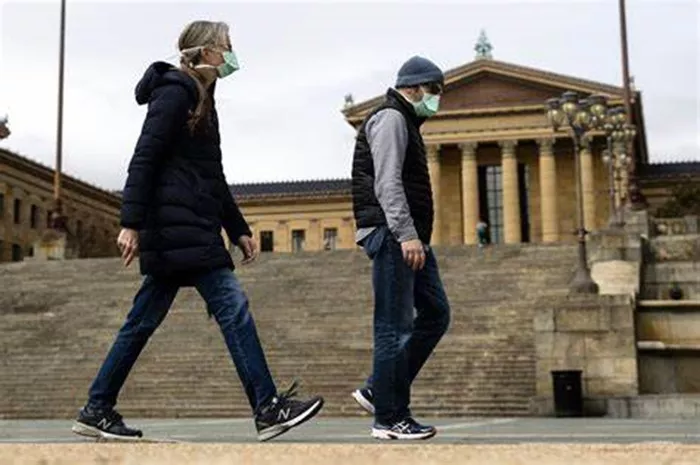Scars are a natural part of the body’s healing process. They form as a result of trauma or injury to the skin, whether from cuts, burns, surgeries, or certain skin conditions. While most scars eventually fade over time, some can be difficult to heal and may persist for years. Understanding why certain scars are harder to heal than others is crucial for both patients and healthcare providers, as this can influence the treatment and care methods used to address them. In this article, we will explore the different types of scars, what makes certain scars harder to heal, and the treatment options available for managing and minimizing these challenging scars.
What Are Scars and How Do They Form?
A scar forms as the skin heals after an injury, surgical incision, or any type of skin damage. The body produces collagen, a protein, to repair the damaged tissue, which eventually forms a scar. However, the nature of the injury and the body’s healing response can influence the characteristics of the scar that forms.
The skin goes through several stages of healing, from inflammation to tissue formation and remodeling. During this process, the body works to close the wound and repair the skin, but in some cases, this healing is not perfect. Instead of regaining the skin’s original texture and appearance, a scar forms. While scars are a natural outcome of the healing process, their appearance and severity can vary based on several factors such as the cause, location, depth of injury, skin type, and how the body reacts to the wound.
Types of Scars
Before examining which scars are hardest to heal, it is important to understand the different types of scars that can form. The classification of scars depends on their appearance and the way they heal. Some of the most common types of scars include:
1. Hypertrophic Scars
Hypertrophic scars are raised scars that remain within the boundaries of the original wound. They can appear thick and red and often form after burns, cuts, or surgical procedures. These scars are caused by an overproduction of collagen during the healing process. While hypertrophic scars can improve over time, they can take months or even years to fully heal.
2. Keloid Scars
Keloids are a more severe form of hypertrophic scars. Unlike hypertrophic scars, which stay within the original wound boundaries, keloids grow beyond the wound area. They are often large, raised, and can cause significant discomfort, itching, and pain. Keloids form when the body produces an excessive amount of collagen during the healing process, leading to a thick, enlarged scar. Keloid scars are particularly challenging to treat, and they often require medical intervention.
3. Atrophic Scars
Atrophic scars are depressed scars that form when the skin loses tissue during healing. These types of scars are most commonly seen after acne, chickenpox, or severe burns. Atrophic scars can appear as pits or indentations in the skin, and they can be difficult to heal because they lack the necessary tissue to fill in the depression.
4. Contracture Scars
Contracture scars are a type of scar that forms when the skin tightens and pulls together, typically as a result of burns. These scars can severely restrict movement, especially if they form over joints or large areas of skin. Contracture scars can be particularly difficult to treat and often require extensive medical procedures.
The Hardest Scars to Heal
While all scars are a result of the body’s natural healing process, some types of scars are more difficult to heal and manage than others. The difficulty in healing these scars often stems from the body’s overreaction to the injury, the location of the scar, or how the scar tissue responds over time. Some of the hardest scars to heal include:
1. Keloid Scars
Keloid scars are considered one of the hardest types of scars to heal. They occur when the body produces an excessive amount of collagen during the healing process, leading to thick, raised, and sometimes painful scars that extend beyond the original wound boundaries. Keloids can form after a minor injury or surgery and are more common in individuals with darker skin tones.
What makes keloid scars difficult to heal is their tendency to grow uncontrollably. Unlike hypertrophic scars, which tend to flatten and fade over time, keloids can continue to grow and spread. They can also be difficult to treat because treatments like topical creams, silicone gels, and corticosteroids often have limited success. In some cases, keloids may even recur after treatment, making them challenging to manage in the long term.
Treatment options for keloid scars often include:
- Corticosteroid injections to reduce inflammation and flatten the scar.
- Laser therapy to break down the excess collagen.
- Cryotherapy (freezing) to reduce the size of the scar.
- Surgical removal, although this can sometimes lead to a recurrence of the keloid.
Despite these treatment options, keloid scars often require ongoing management, and there is no guarantee that the scar will not return after treatment.
2. Severe Burn Scars (Contracture Scars)
Burns are one of the most traumatic forms of injury, and severe burn scars, also known as contracture scars, can be among the most difficult to heal. These scars form as the skin tightens and pulls together after the burn injury, which can result in a loss of mobility and functionality. Contracture scars are particularly concerning when they form over joints, as they can restrict movement and cause long-term disability.
What makes burn scars particularly hard to heal is the extent of the damage to both the skin and the underlying tissue. Severe burns can destroy the skin’s ability to regenerate, leading to the formation of thick, fibrous scar tissue. Additionally, because burn wounds are often deep, they may involve nerve damage, which can complicate the healing process.
Treatment for burn scars often requires a combination of approaches, including:
- Surgical grafts to replace the damaged skin with healthy tissue.
- Compression garments to apply pressure and reduce the formation of contracture scars.
- Physical therapy to maintain or regain movement and flexibility in the affected area.
- Laser therapy to soften and flatten the scar tissue.
While burn scars can improve with time, the healing process can be lengthy, and scars may never fully disappear, particularly if they are severe.
3. Acne Scars (Atrophic Scars)
Acne scars, particularly atrophic scars, are also considered some of the hardest scars to heal. Atrophic scars form when the skin loses tissue, leaving behind depressions or indentations in the skin. These types of scars are common after cystic or severe acne and can be difficult to treat because they often involve a loss of collagen and skin tissue.
There are several types of atrophic scars, including ice pick scars, boxcar scars, and rolling scars, each of which presents different challenges for treatment. Ice pick scars, for example, are deep, narrow scars that are particularly challenging to treat because of their depth. Boxcar scars, on the other hand, are wider and more shallow, which can make them easier to address.
Acne scars are often difficult to heal because they involve damage to the deeper layers of the skin. While treatments like topical creams and over-the-counter products can improve the appearance of scars, they are often not enough to fully remove the scars. For more severe acne scars, professional treatments such as laser resurfacing, microneedling, and chemical peels may be necessary to promote collagen production and improve the skin’s texture.
4. Surgical Scars (Deep and Wide)
Surgical scars can also be difficult to heal, especially when the incision is deep or wide. These scars are often the result of necessary surgeries, such as those for cancer, organ removal, or reconstructive procedures. The difficulty in healing surgical scars depends largely on the location and extent of the surgery, as well as the individual’s healing process.
For example, surgeries that require large incisions or involve the abdominal area often lead to more noticeable scars, and healing can be complicated by factors such as infection or poor blood circulation. Additionally, surgical scars that form across joints or high-mobility areas may be prone to tension and stretching, which can worsen the appearance of the scar.
While most surgical scars fade over time, some individuals may require additional treatments such as silicone gels, corticosteroid injections, or laser therapy to improve the appearance of the scar and reduce its size.
Conclusion
While all scars are a natural and unavoidable part of the healing process, some scars are significantly harder to heal than others. Keloid scars, severe burn scars, atrophic scars, and deep surgical scars are among the most challenging types to treat. The difficulty in healing these scars often stems from factors such as excessive collagen production, skin loss, depth of injury, and location of the scar.
The healing process can take time, and while treatments like silicone gels, corticosteroid injections, and laser therapy may help improve the appearance of scars, there is no one-size-fits-all solution. For many individuals, managing difficult scars requires patience and ongoing care, and in some cases, multiple treatments may be needed to achieve the best possible outcome. If you have a particularly challenging scar, it is essential to consult with a healthcare professional to determine the most appropriate treatment and management plan for your unique situation.
Related Topics

































